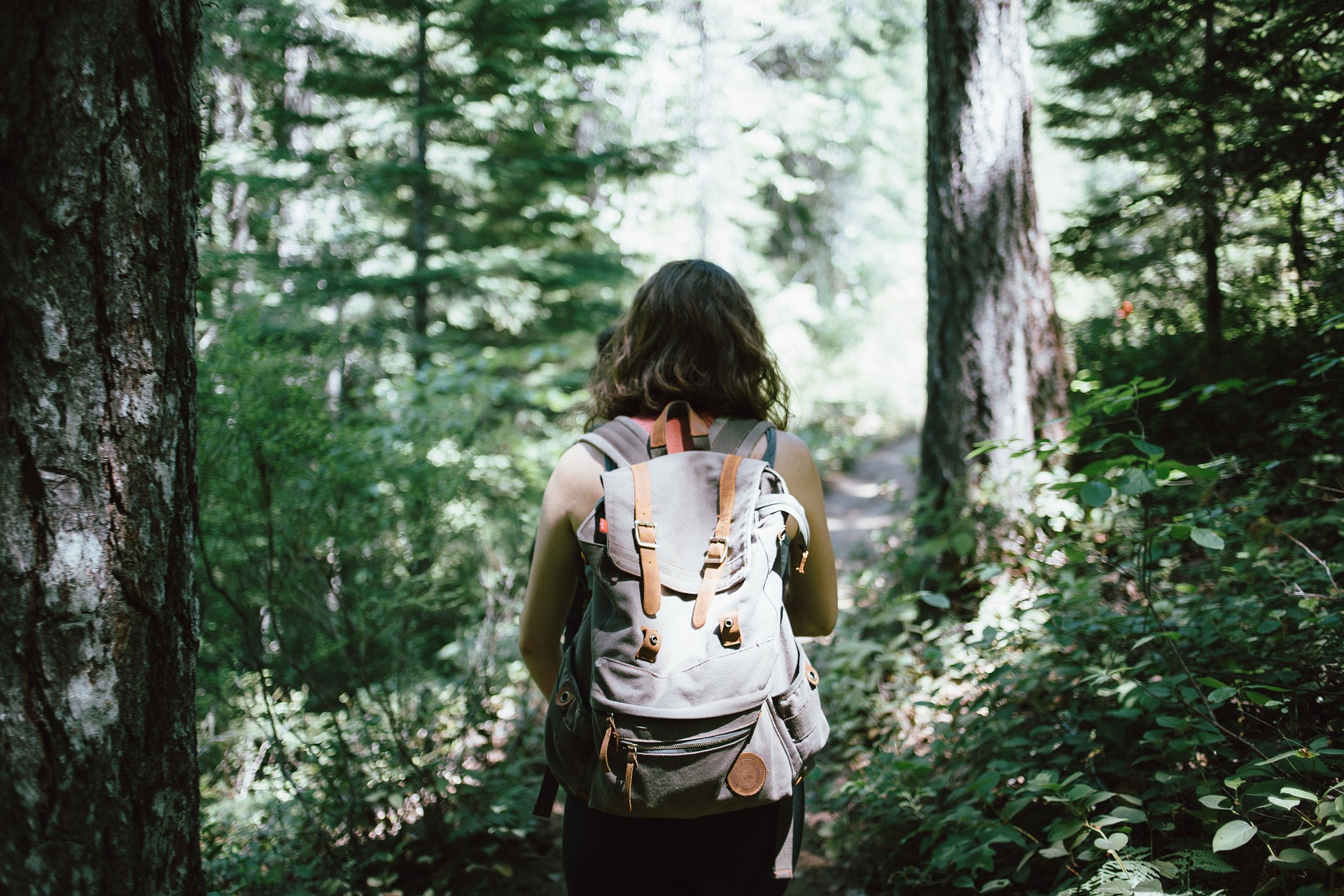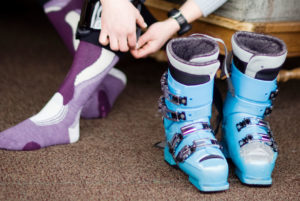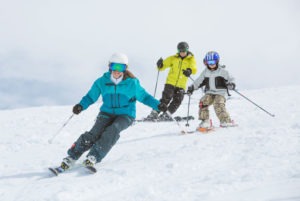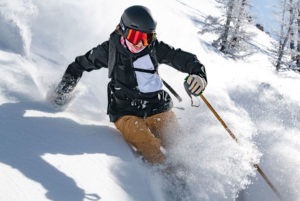Aside from your hiking shoes, your hiking backpack is the foundation of gear. Whatever the length of your trip, a backpack should always be worn carrying such supplies as water, food, extra clothing, sunscreen, camera and a First-Aid kit. If hiking and camping overnight, you’ll of course need a tent, sleeping bag and cooking equipment (if you plan on eating something other than energy bars!). When shopping around for a hiking backpack, always consider features, styles, price and brand.
Before purchasing a backpack that you like the look or color of, determine how you plan to use your hiking backpack. That is, will you be carrying overnight gear in it? Or will you be toting along the bare essentials? Remember that it’s not uncommon to own multiple hiking packs depending on how often you hike.
Types of Hiking Backpacks
Fanny Pack (150 – 1,200 cubic inches)
Often referred to as “lumbar packs,” fanny packs are tucked into the small of your back and they are the most efficient at carrying small loads for day hikes. They are compact, convenient and easily fit into a larger pack if necessary. The are nice because they won’t cause your back to sweat and they allow for more natural range of movement. The drawback is that fanny packs can sag if overpacked. Ten pounds is about the max.
Day Hiking Backpack (1,200 – 3,000 cubic inches)
Day hiking backpacks, or daypacks, are actually more versatile than their name. While volume does determine a proper daypack, they can also be used for overnight or even weekend trips with proper packing skills (and lightweight gear). True lightweight fanatics could go for a week using such “day” hiking backpacks. Some daypacks will be specifically noted as “lightweight daypacks.” Look for a daypack with a padded back and waist strap. Some waist belts are padded and preferred by people who use their day hiking backpack for overnight trips. It adds a few ounces, but yields eons of comfort. Other people find the padded waist belt cumbersome. At the very least, however, a day hiking backpack should always have a padded waist strap if it’s larger than 2,000 cubic inches.
Hydration Hiking Backpacks
Hydration packs are essentially day hiking backpacks or fanny packs with an internal water bladder and tube dispenser. They are ideal for very active outdoor activities like trail running, fast-packing and mountain biking. Many hikers also love hydration backpacks, like this Madshus Nanosonic pack, for their convenience and space saving ability when carrying water for a hot day. Some hydration packs are very slim and narrow, strictly for running or biking, while others are designed to carry extra gear as well.
Multiday Hiking Backpack (3,000 – 7,000 cubic inches)
Larger backpacks need some sort of frame or support, otherwise the pack will teeter totter and throw your balance off. The frames also give the pack shape when it’s not filled to it’s maximum capacity. There are two types of back frames.
- External Frame Hiking Backpack – Once the norm in year’s past, external frames aren’t quite as popular. Although, there is still somewhat of a following for this type of overnight hiking backpack. They cost less and can be a good starting point for someone new to the activity or for a child who will soon outgrow it. They are a bit cooler since the whole surface of the pack doesn’t touch your back. External frames also allow the user to haul big, heavy and awkward loads. Sometimes hunters carry their catch on these types of packs. The biggest drawback is that they are very cumbersome to travel with whether it by car, plane or cabs while traveling. They are also known to shift unpredictably.
- Internal Frame Hiking Backpack – Very popular today, an internal frame pack, like Marmot’s, hugs and conforms to your body for extended comfort while trekking on foot. They also shift less and allow more body control. This is key when scrambling up a steep rock face or ascending for a few miles. Internal frame packs also look cool and have a variety of colors and styles from which to choose! While there aren’t many drawbacks, the one concern is that they can be hot on your back. However, newer internal frame packs all have mesh padding and some even are designed so that air can cross flow across your back.

Hiking Backpack Features
- Hip Belt – Without a solid hip belt, all of the weight would be on your shoulder, neck and back rather than on your strong hips and legs. Generally, the wider the hip belt, the more support. Women’s specific models have less broad hip belts, so they don’t dig in to your skin. Many hip belts these days are even detachable for a super custom fit.
- Shoulder Harness – A curved shoulder harness fits best. It keeps the upper back near your body for a close fit.
- Stabilizer Straps – Upper load stabilizer straps are adjustable straps that run from the shoulder strap at the top of the shoulder to an attachment point on your backpack. They help to adjust the distance between your back and your pack.
- Lumbar Pad – Situated at the small of the pack, a lumbar pad with high-friction fabric is ideal because it reduces belt slippage. Most of the downward force sits at this point, so lumbar padding is key.
- Loading Method – For day hiking backpacks, a top loading is all that is necessary. Overnight packs, on the other hand, can get quite full and solely a top loading entry will be quite a hassle when your extra layer of clothing is in the middle of your pack. Most over night packs these days also have a front loading zipper to access the middle or bottom of the pack.
- Pockets – Internal and external pocket are very nice for organizing gear. Many packs, especially day hiking and overnight, have water bottle pockets on the sides. These are perfect for grabbing a sip without stopping.
Be sure to check out all of our backpacks and bags here so that you can be set for your next trip into the wilderness!









I am a big hydration pack and hip pack person. I haven’t yet found that hip pack that has a good hydration pack attached. Is anyone out there familiar with one? The backpack works well but sometimes it’s nice to take the weight off the shoulders.
[…] by asking yourself what you’re going to be using it for. Are you trying to find the best backpack for hiking? Or do you need something for more of an everyday purpose? How long will you normally be out with […]